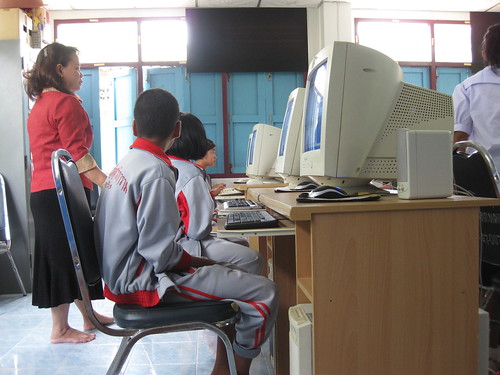Fall 2013 EME 2040
Throughout this semester I feel that I have grown both
personally and professionally. I have a better understanding of what it takes
to become and e-teacher in today’s teaching world. I currently do not know if I
will want to continue my education in the teaching field but do know that the
materials that I have learned and practiced have become very useful in my
current career. I feel that the content within this class was presented in a
thorough way and that many valuable experiences have come from this class. This
class has a lot of content though and I found it sometimes difficult to absorb
all the content in a useful way. I found myself struggling sometimes flipping
through pages of notes to remember how something was done or how something works.
I used a lot of trial and error and felt that I definitely spent a great deal
of time on each project. This class may be better absorbed if it was a two day
class spread over the course of the week. For students that are a little savvier
on computers it was probably easier for them.
I have a better understanding of the necessity of
becoming an e-teacher. With all of the new technologies and resources presented
to today’s youth it would be very difficult for a teacher to be successful
without integrating technology into their daily planning. I also feel that it
is important for the teacher fully understand the latest technologies so that
they can continue to manage their classroom accordingly. It’s a necessity that
the teacher continue to learn so that he or she can continually challenge students
in new and innovative ways and stay organized within their classroom.
Classmate Interactions
Being one of the oldest in the class I found it a little
difficult to fully interact sometimes. However, I have made a few friendships
with some of my closest table-mates. I learned that sometimes not all students
attending college have the same drive as others and I learned that not all
students take as much pride or responsibility for their work or portions of
collaborative projects. It did get frustrating sometimes, but it just reminded
me of how some students in our classes may feel during class projects. I think
that collaborative work is important because it teaches tolerance, teamwork,
and builds relationships. I also learned through this that even though a
collaborative project is done as a group the teacher/Professor must grade
accordingly.
Even with the frustrations I truly did enjoy the two
projects that we did collaboratively. The Collaborative lesson plan was much
easier because we were able to meet together and verbally bounce ideas off each
other and create our plan of attack. The Wiki was a bit more difficult because
of the non-verbal interaction and waiting to hear back from our group to
complete a task. Also with the Wiki each individual was responsible for a
portion of the project and not all of us had the same level of creativity.
Learning Outcomes
As mentioned above the learning content was powerful. A
lot of materials were presented and a lot of work was done within this class.
Each project taught me patience, creativity, dedication, and perseverance.
Below I have expressed my feelings on some of the
projects within this class:
Collaborative Lesson Plan
This project allowed me to better understand how a real
classroom lesson plan is to be developed while incorporating technology not
only to develop it but to include for the students. I was able to explore many
different resources while searching for content relevant to the topic. I was
also introduced to the Florida Sunshine Standards.
Wow, what a great tool for teachers and students alike. I
really enjoyed exploring the hundreds of resources developed by teachers.
Reviewing some of these assisted me with the development of my own. Although it
was a bit challenging at first I was able to understand it after some trial and
error.
This was by far my favorite project! I spent several days
and hours on this but actually had fun with it. I enjoyed the freedom to be
creative along with using a new technology tool for me. I am excited to use
this as a resource for me to build on in the future. I may even create a
classroom website for our After School or Preschool classrooms at the YMCA. I
feel that I really grasped the educational components and topics of this
project.
This project was a little difficult for my group to
complete collaboratively but I did like the idea of the overall web tool. I
think that this could be used in many facets of my current position. It can be
utilized within a classroom or for a resource tool. It was fairly simple to use
but did not allow for as much creativity as a regular website.
In conclusion
I loved this class despite the workload. I am also
excited to have the book to utilize in the future as a resource guide when developing
lesson plans in whichever career I maintain or achieve. Regardless, I plan to
continue working with children in some capacity and know feel comfortable integrating technology through new ways!
"Advantages to Cross-Curricular Thematic Instruction...." eme2040fa13group2. N.p., n.d. Web. 4 Dec. 2013. <http://eme2040fa13group2.wikispaces.com
Franklin, T., Duran, M. & Kariuki, M. (2001). Mentoring Overcomes Barriers to Technology Integration. In J. Price et al. (Eds.), Proceedings of Society for Information Technology & Teacher Education International Conference 2001 (pp. 848-849). Chesapeake, VA: AACE.
Maloy, R. W., Verock-O, R. E., Edwards, S. A., & Woolf, B. P. (2010). Transforming learning with new technologies. Allyn & Bacon.

